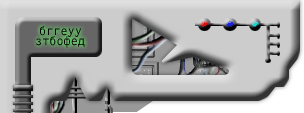/:IF condition
..
ELSE
..
/:ENDIF
CASE ... ENDCASE
It si similar to multiple
IF.. ENDIF's but is much cleaner.
/:CASE condition
/:WHEN value1
...
/:WHEN value2
...
...
/:ENDCASE
TIME/DATE/COUNTRY Formats
These commands are used for specifying
the format of date and
time and setting the default country.
/:SET DATE MASK = 'MM.DD.YYYY'
/:SET TIME MASK = 'HH:MM'
/:SET COUNTRY 'DN'
PERFORM ... IN PROGRAM .... USING.. CHANGING ..
ENDPERFORM
To call ABAP subroutines from within
a form we use the
PERFORM... IN PROGRAM ... statement , the
advantage of
using it is that the print program is
not required to cahnge and we
can get the new data from the subroutine which
is placed in a Z
report . To pass and get the values from th
subroutine the
parameters are passed which are of type
structure ITCSY.
e.g. /:PERFORM get_date IN PROGRAM zreport
/:USING &SALESORDER&
/:CHANGING
&S_DATE&
/:ENDPERFORM
The date &S_DATE& ....
The ABAP Code would be
REPORT zreport.
TABLES ztab.
FORM get_date TABLES in_tab STRUCTURE
ITCSY out_tab
STRUCTURE ITCSY .
READ TABLE in_tab INDEX 1.
SELECT some_date FROM ztab WHERE salesorder
= in_tab-value.
IF sy-subrc EQ 0.
READ TABLE out-tab INDEX 1.
MOVE ztab-somedate TO out_tab-value
MODIFY out_tab INDEX 1.
ENDIF.
ENDFORM.
In the above code USING is
used to pass the value to the
subroutine while changing is used to recieve
the value from th
subroutine ,for further paramters we
can use either USING or
CHANGING .
In the subroutine the type of paramter
is always an internal table of
type ITCSY irrespective of
the value passed.The VALUE field
of the internal table is used to fill and
recieve the values .

